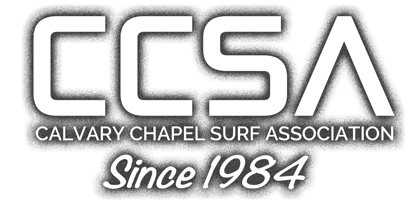
CCSA SUMMER SERIES RULES
CCSA SUMMER SERIES RULES
CCSA CONTEST RULES
(1) Entry Rules: Beach Entries only as available. If you miss your heat, you can be placed on the alternate list and be given a number. If you miss the contest, you forfeit your entry fee. That entry fee will not carry over to the next contest. All entries are non-transferable. If contest is cancelled, all monies will be refunded. All contests will begin at 7:00 a.m. weather and light permitting.
(2) Check In / Heat Rules: Contestants will be required to check-in one heat prior to their designated heat. Surfers are expected to be at the water’s edge by the 5 minute warning. If a surfer fails to check-in by this time he will be replaced by an alternate. It is the surfer’s responsibility to know when their heat takes place and to be on time. All heats will begin from the beach, unless surfing conditions require a water start. The heat will begin with 2 horns and the light turning GREEN. At the 5 minute warning, 1 horn will sound and the light will change to YELLOW. The heat will end with the sounding of 2 horns which will change the light to RED and then the light will turn GREEN. Simultaneously the heat in the water will end and the next heat on the beach will begin. There will be no breaks between heats unless necessary. Note: If the Head Judge determines there will be a water start, surfers will enter the water at the sounding of the 5 minute warning horn.
(3) Surfer Heat Priority: A priority system will be used in 4 person U-14 and U-16 heats. Riders establish priority by being the first to reach the Primary Takeoff Zone under direction of the Head Judge. When surfers reach the line-up at the same time, priority will go to the surfer who did not have the last priority. The judging panel will determine who has priority in heats and may consult with the Head Judge for close calls. This priority will be indicated by changing the colors of the priority markers to coincide with the colors of the competition jersey worn by each rider. The priority marker will be situated at one end of the judging area where it is clearly visible by the competitors. It will be changed immediately as priority changes, by the direction of the Head Judge. At the start of a heat when multiple riders have not established a priority order, there will be no priority between these riders and normal interference rules will apply.
(4) Interference Rule: The surfer on the inside (closest to the curl) has wave possession in all situations. If two surfers stand together on a peak, and both choose to go in the same direction, the surfer closest to the shoulder must exit immediately. If a surfer drops in behind him, the surfer making the first turn still has possession. The penalty for interference is subtraction of the highest scoring wave of the best 2 waves on each judge’s sheet. For the interference to be effective it must be marked by 2 of the 3 judges.
(5) Scoring System: The CCSA adheres to the ISA Scoring System and Regulations. A 1 to 10 scoring system will be used. Each heat will consist of a ten-wave maximum with the top two waves being counted. When a heat has ended, all surfers must return to the beach in a prone position. Standing after the horn sounds will result in the same deduction as an interference stated above. If anyone on the judging panel misses a wave which affects the final outcome of a heat, the score on the Head Judge’s sheet will be recorded on the sheet for the missing wave. This is only effective if the Head Judge scored that particular wave. Fighting or leash grabbing will result in immediate disqualification of the perpetrator or of all involved.
(6) Shortboard Judging Criteria: The surfer must perform radical controlled maneuvers with the highest degree of difficulty in the critical sections of a wave with speed, power, and flow. Innovative/progressive surfing as well as the combination and variety of repertoire will also be taken into consideration when rewarding points for a surfers performance.
(7) Longboard Judging Criteria: The longboard surfer must perform traditional controlled maneuvers with the highest degree of difficulty in the most critical sections of the wave to gain the highest score. Judges will reward the performance with reference to style and flow, visual appeal, commitment, variety of maneuvers, and use of the entire board. Nose riding, trimming, and footwork will be important elements in the Judges decision-making.
(8) Amateur Status: All contestants must be amateurs, and cannot accept any prize money, or awards exceeding $250 per contest.

